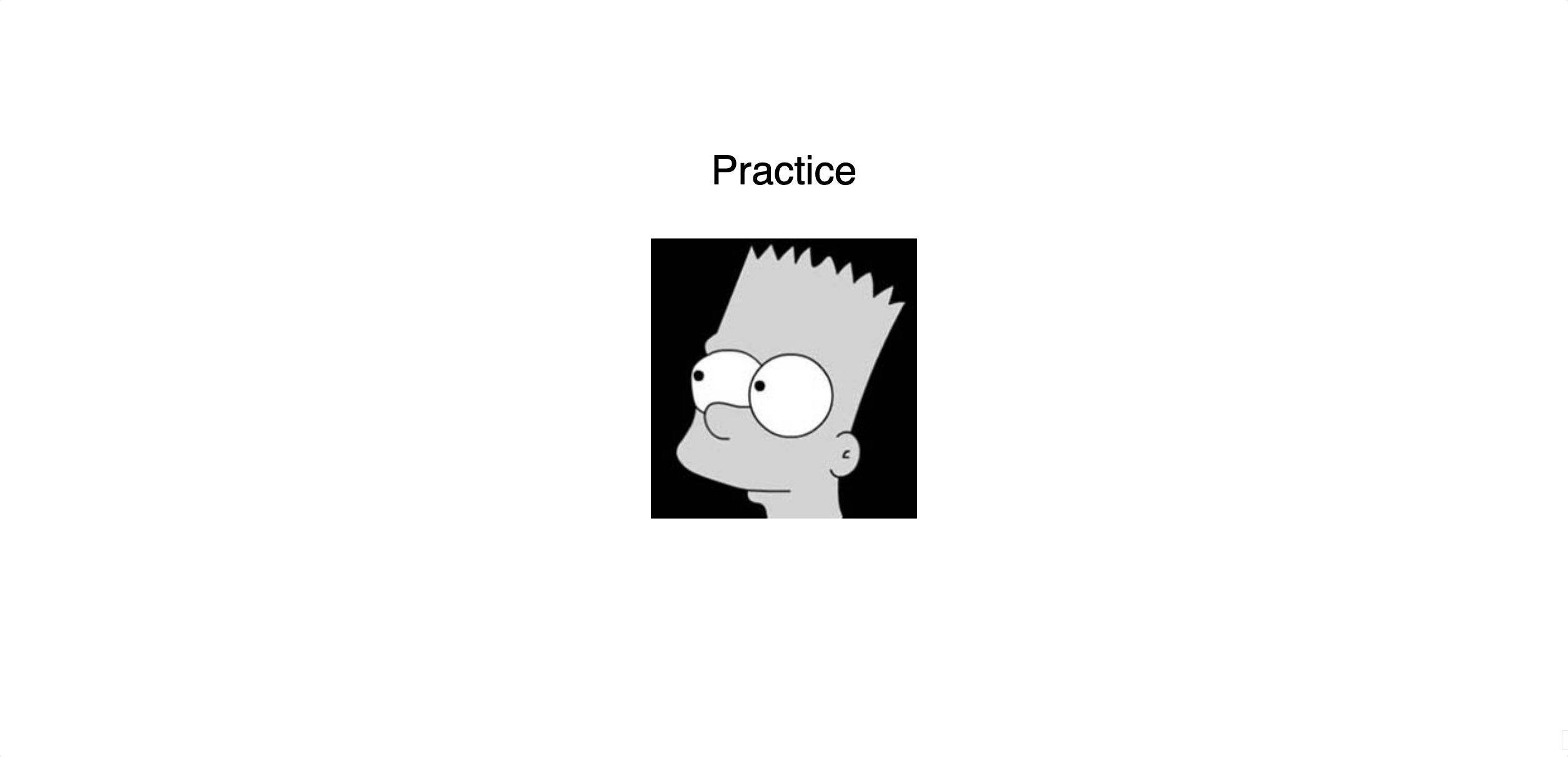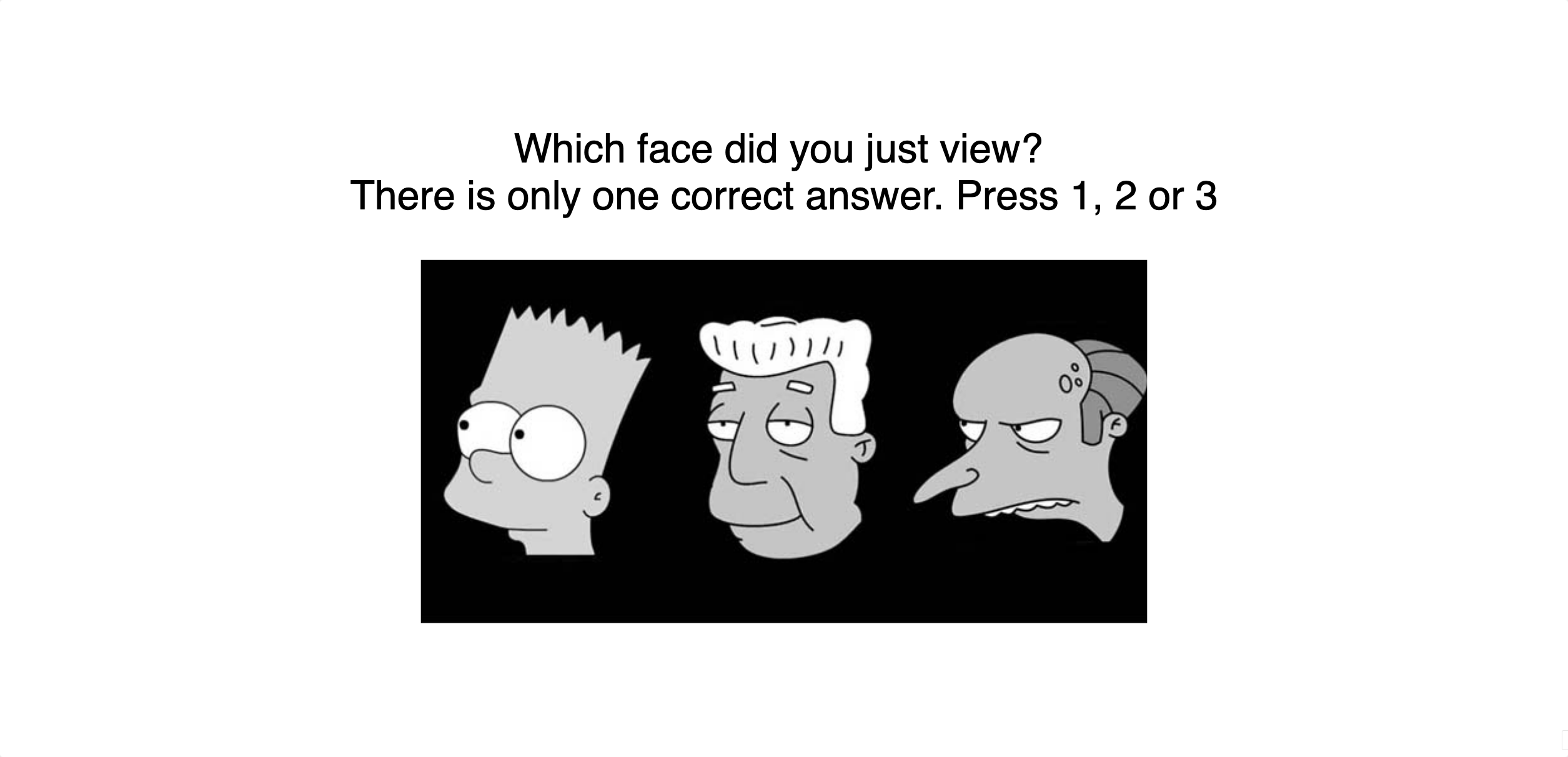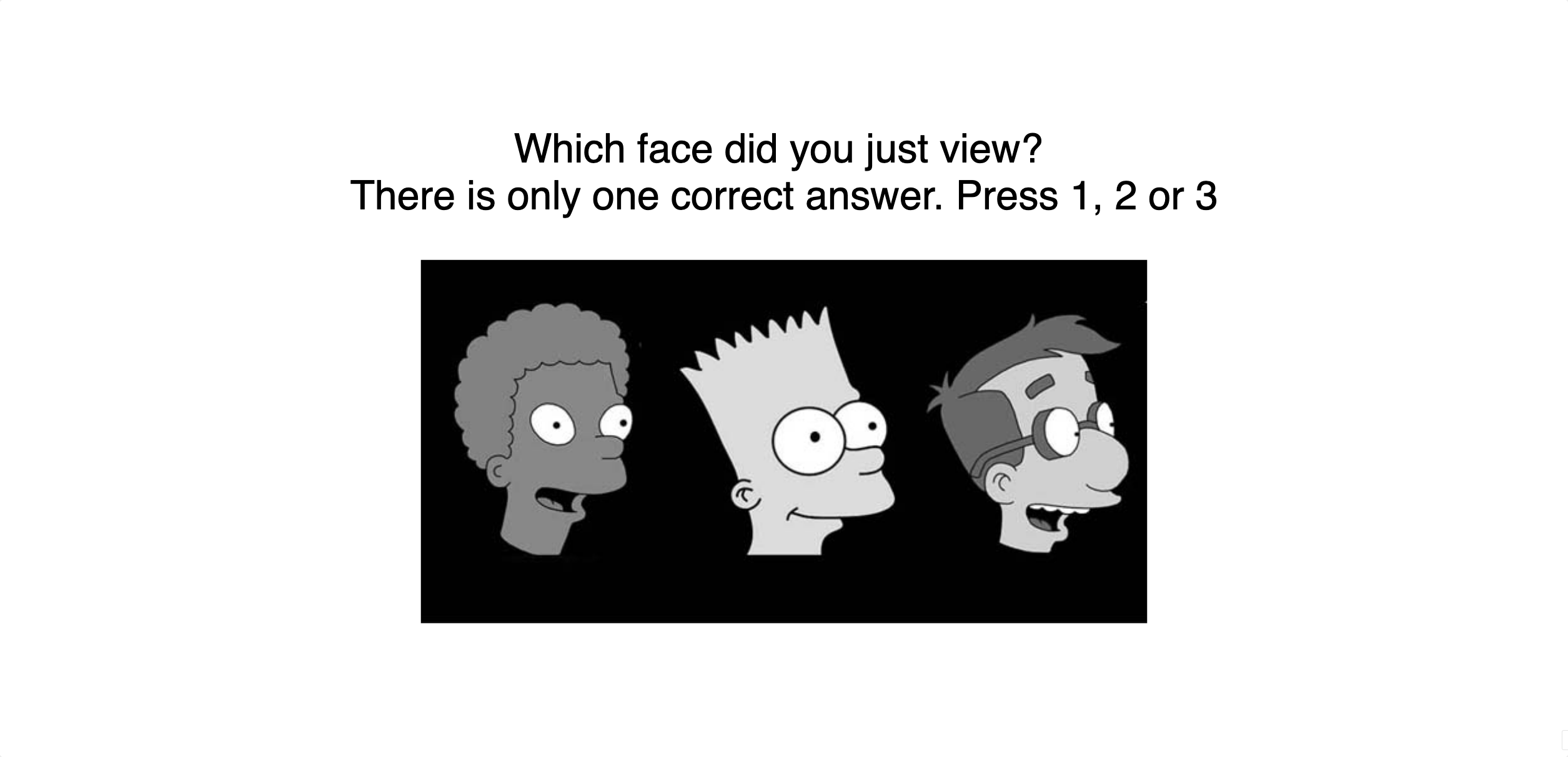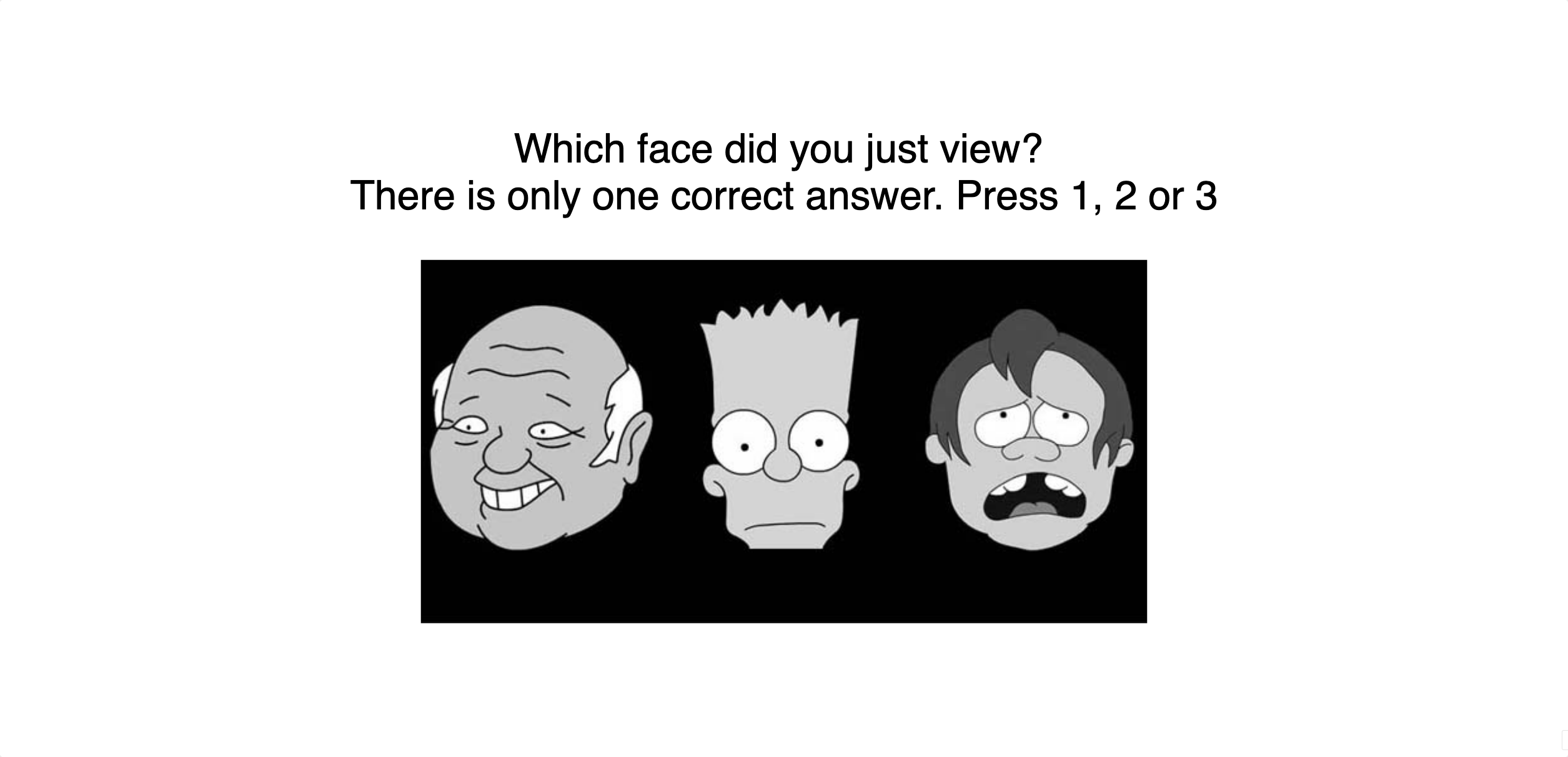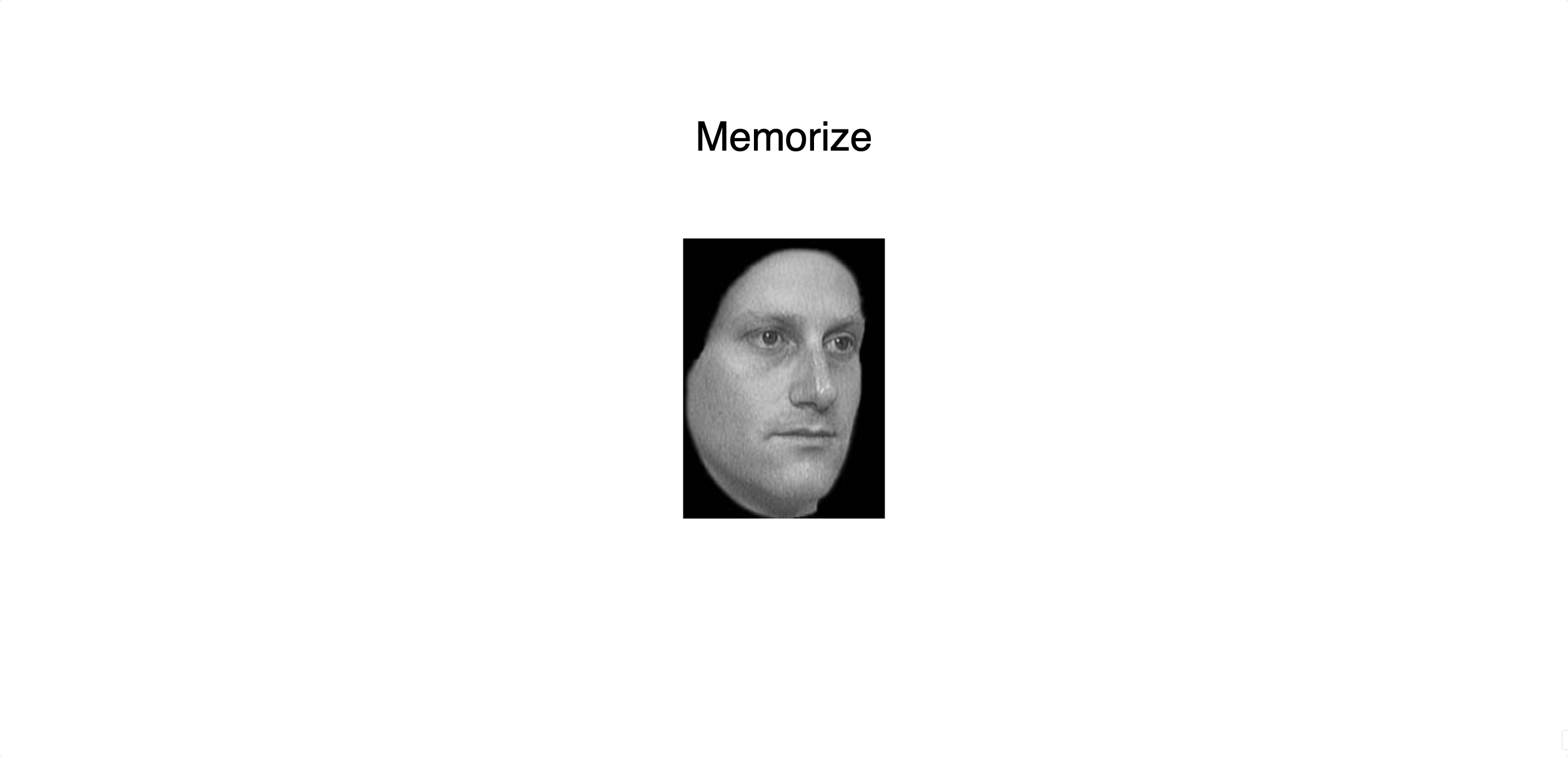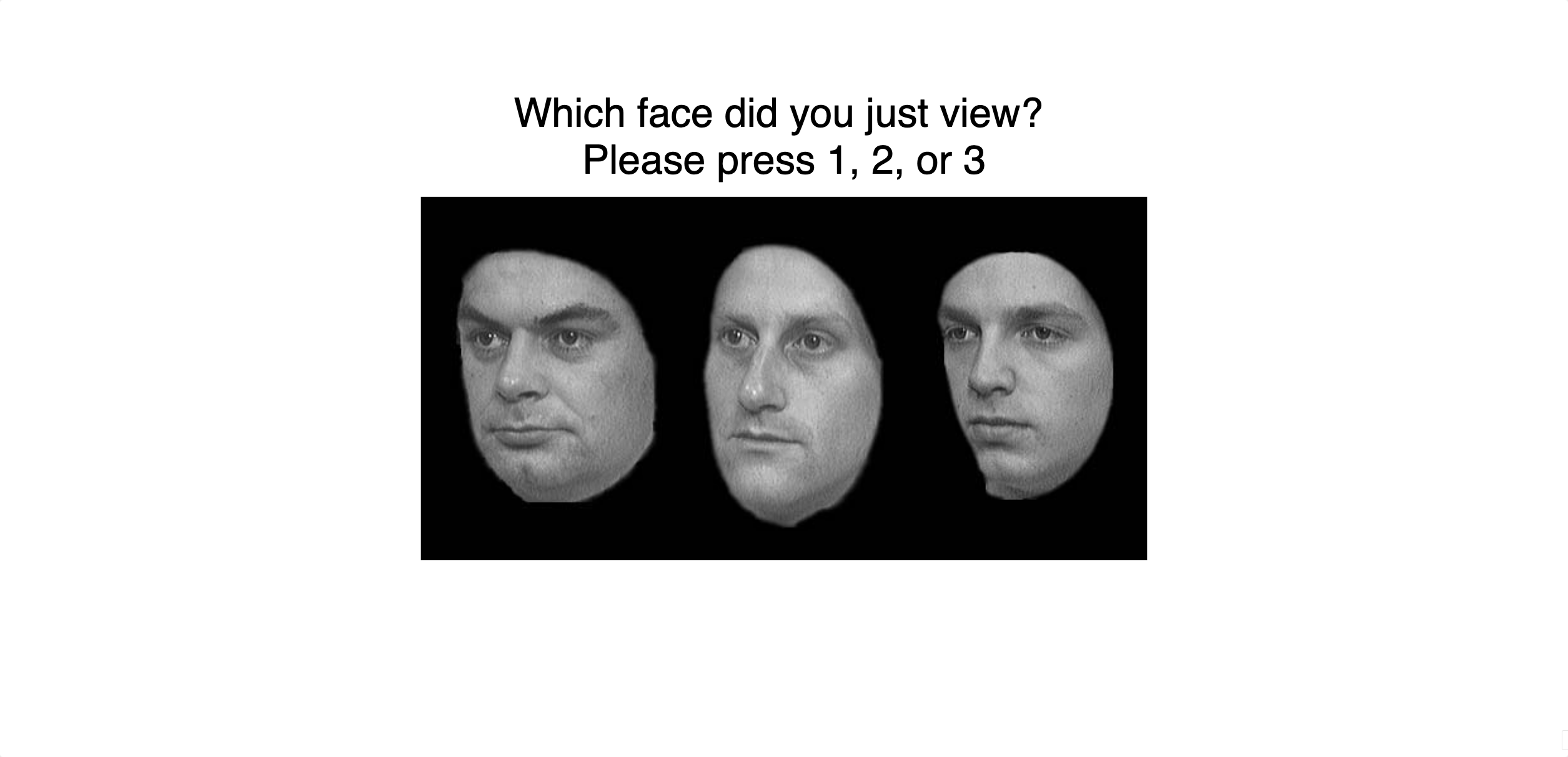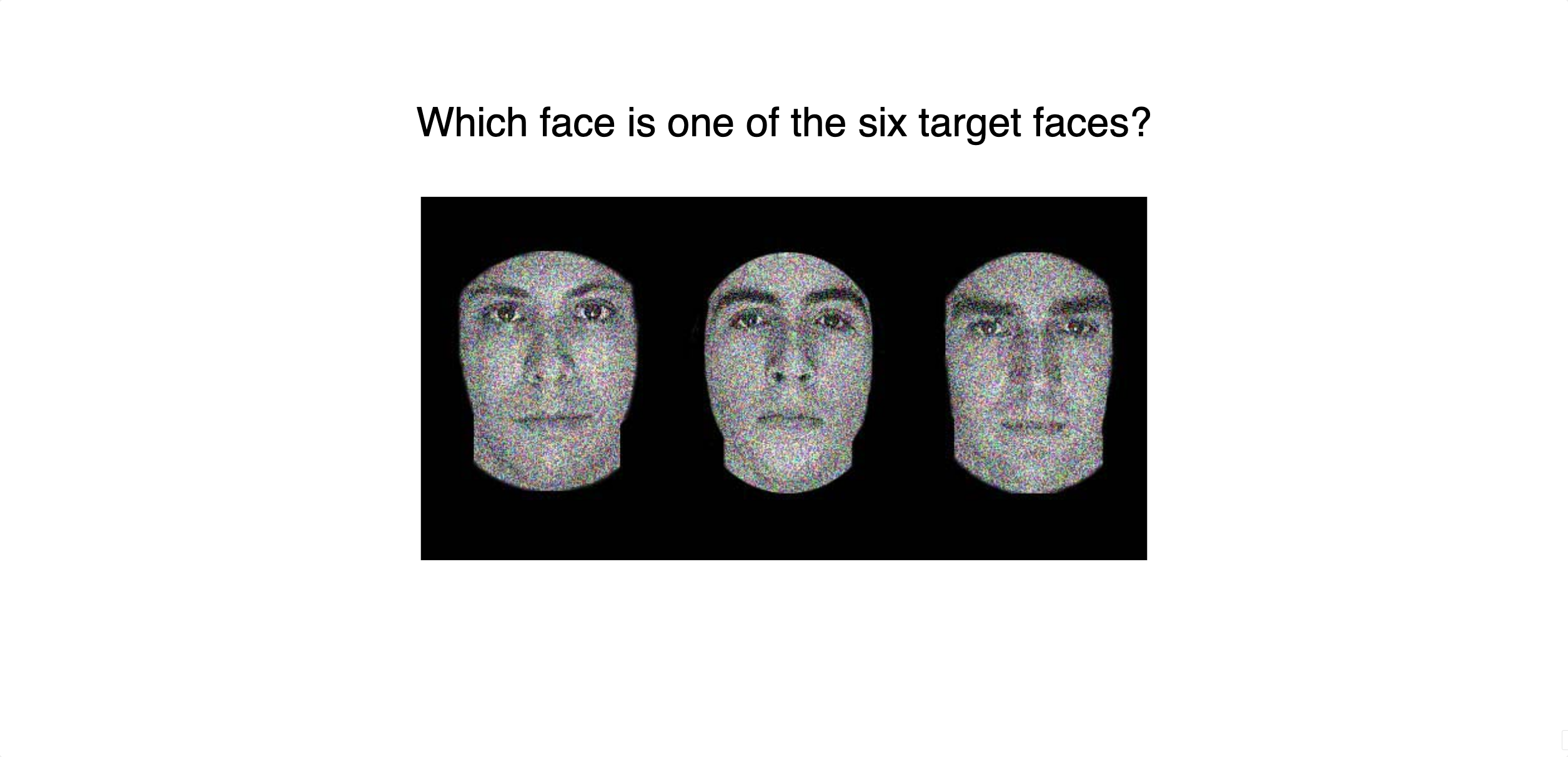Cambridge Face Memory Test (CFMT)¶
Abstract¶
The two standardized tests of face recognition that are widely used suffer from serious shortcomings Duchaine, B. & Weidenfeld, A. (2003). An evaluation of two commonly used tests of unfamiliar face recognition. Neuropsychologia, 41, 713–720; Duchaine, B. & Nakayama, K. (2004). Developmental prosopagnosia and the Benton Facial Recognition Test. Neurology, 62, 1219–1220]. Images in the Warrington Recognition Memory for Faces test include substantial non-facial information, and the simultaneous presentation of faces in the Benton Facial Recognition Test allows feature matching. Here, we present results from a new test, the Cambridge Face Memory Test, which builds on the strengths of the previous tests. In the test, participants are introduced to six target faces, and then they are tested with forced choice items consisting of three faces, one of which is a target. For each target face, three test items contain views identical to those studied in the introduction, five present novel views, and four present novel views with noise. There are a total of 72 items, and 50 controls averaged 58. To determine whether the test requires the special mechanisms used to recognize upright faces, we conducted two experiments. We predicted that controls would perform much more poorly when the face images are inverted, and as predicted, inverted performance was much worse with a mean of 42. Next we assessed whether eight prosopagnosics would perform poorly on the upright version. The prosopagnosic mean was 37, and six prosopagnosics scored outside the normal range. In contrast, the Warrington test and the Benton test failed to classify a majority of the prosopagnosics as impaired. These results indicate that the new test effectively assesses face recognition across a wide range of abilities.
Reference¶
Description¶
A three stage task where participants must identify target faces from memory in a 3AFC task. Stages get successively more difficult, from identification immediately following presentation of an individual face to memorisation of six faces at once and a series of 3AFC decisions, to a series of 3AFC decisions with visual noise presented over the probes.
Cambridge Face Memory Test Australia (CFMT-Aus)¶
Abstract¶
The Cambridge Face Memory Test (CFMT, Duchaine & Nakayama, 2006) provides a validated format for testing novel face learning and has been a crucial instrument in the diagnosis of developmental prosopagnosia. Yet, some individuals who report everyday face recognition symptoms consistent with prosopagnosia, and are impaired on famous face tasks, perform normally on the CFMT. Possible reasons include measurement error, CFMT assessment of memory only at short delays, and a face set whose ethnicity is matched to only some Caucasian groups. We develop the “CFMT-Australian” (CFMT-Aus), which complements the CFMT-original by using ethnicity better matched to a different European subpopulation. Results confirm reliability (.88) and validity (convergent, divergent using cars, inversion effects). We show that face ethnicity within a race has subtle but clear effects on face processing even in normal participants (includes cross-over interaction for face ethnicity by perceiver country of origin in distinctiveness ratings). We show that CFMT-Aus clarifies diagnosis of prosopagnosia in 6 previously ambiguous cases. In 3 cases, this appears due to the better ethnic match to prosopagnosics. We also show that face memory at short (<3-min), 20-min, and 24-hr delays taps overlapping processes in normal participants. There is some suggestion that a form of prosopagnosia may exist that is long delay only and/or reflects failure to benefit from face repetition.
Reference¶
Cambridge Face Memory Test Female (F-CFMT+)¶
Abstract¶
The Cambridge Face Memory Test (CFMT) is one of the most used assessments of face recognition abilities in the science of face processing. The original task, using White male faces, has been empirically evaluated for psychometric properties (Duchaine & Nakayama, 2006), while the longer and more difficult version (CFMT+; Russell et al., 2009) has not. Critically, no version exists using female faces. Here, we present the Female Cambridge Face Memory Test – Long Form (F-CFMT+) and evaluate the psychometric properties of this task in comparison to the Male Cambridge Face Memory Test – Long Form (M-CFMT+). We tested typically developing emerging adults (18 to 25 years old) in both Cambridge face recognition tasks, an old-new face recognition task, and a car recognition task. Results indicate that the F-CFMT+ is a valid, internally consistent measure of unfamiliar face recognition that can be used alone or in tandem with the M-CFMT+ to assess recognition abilities for young adult White faces. When used together, performance on the F-CFMT+ and M-CFMT+ can be directly compared, adding to the ability to understand face recognition abilities for different kinds of faces. The two tasks have high convergent validity and relatively good divergent validity with car recognition in the same task paradigm. The F-CFMT+ will be useful to researchers interested in evaluating a broad range of questions about face recognition abilities in both typically developing individuals and those with atypical social information processing abilities.

